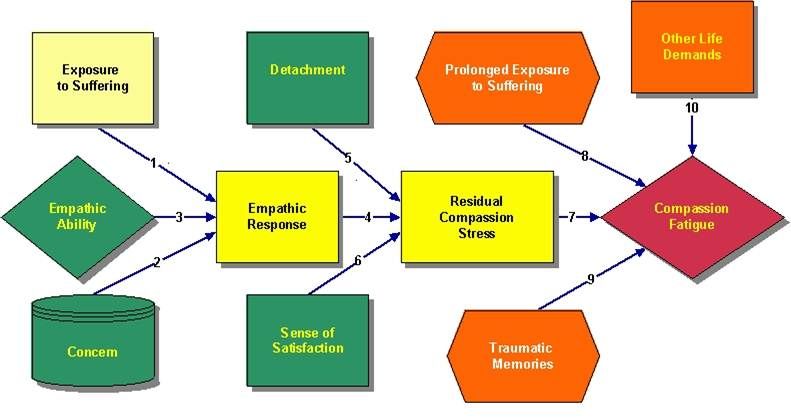Oncology units are known to pose significant emotional challenges for the involved staff. The nurses and clinicians who work in the oncology witness psychologically challenging and stressful events on a daily basis. As a result of the exposure, they may develop compassion fatigue – a condition in which the individual’s capacity for empathy and compassion decreases over time. Compassion fatigue is associated with multiple adverse effects that usually result in a decreased quality of care and a disrupted workplace culture.

Current Practice of a Unit
The oncology unit in question is characterized by a heavy workload and highly stressful environment, which is a relatively common occurrence for the setting (Kleiner & Wallace, 2017). While certain precautions are taken to mitigate the adverse effect of excessive workload, not all of them are considered effective. For instance, the regular weekly visits by the priest were reported by some nurses to be inconvenient since the timing interferes with their schedule. In addition, some of the nurses are reluctant to come to the meeting when they are not on the shift on that day. Under such conditions, it is reasonable to expect the decrease in the effectiveness of the intervention.
Evidence
According to a cross-sectional survey by Yu, Jiang, and Shen (2016), nurses working in the oncology setting are at a higher risk of developing compassion fatigue. Several factors were determined to be reliable predictors of the condition’s formation, namely the number of years in the unit and adoption of passive coping styles. These findings are corroborated by the results of the study by Kleiner and Wallace (2017).
The researchers suggest that subjective time pressure, rather than an actual increase in workload, was shown to be a major predictor of both burnout and compassion fatigue. Thus, it is apparent that the workplace climate and culture are at least as significant in determining the expected occurrence of fatigue as a quantifiable and measureable workload. To sum up, the oncology setting displays a number of characteristics that are associated with the development of the condition and necessitates the implementation of comprehensive interventions in order to mitigate its dangerous effects.
Recommendations
Several strategies have been devised that are expected to minimize the described effect. The strategies can be grouped into two categories. The first category includes long-term solutions. These strategies include training programs, promotion of self-care in the workplace, and organization of counseling sessions in order to equip nurses with relevant knowledge (Houck, 2014). The second category involves short-term tactics such as keeping a journal and using positive coping strategies in order to boost individual resilience towards the stress experienced by the staff on a daily basis (Harris & Griffin, 2015). With these strategies on hand, it is possible to expect a sufficient improvement in the short term combined with the establishment of a positive workplace culture intended to increase the resilience of the nurses to the adverse effects of stress.
Quality and Safety
As can be seen, the second category is a more suitable solution for individual practitioners. Therefore, as a part of the project, I would recommend three strategies to my peers. First, I suggest keeping a diary where they would log their emotions and feelings in order to better understand their psychological state. Second, I suggest broadening social activities outside the work, which would create the necessary relief. Third, I recommend engaging in active lifestyle through regular exercise and healthy recreational activities, which will boost their resilience to stress and decrease the likelihood of developing compassion fatigue.